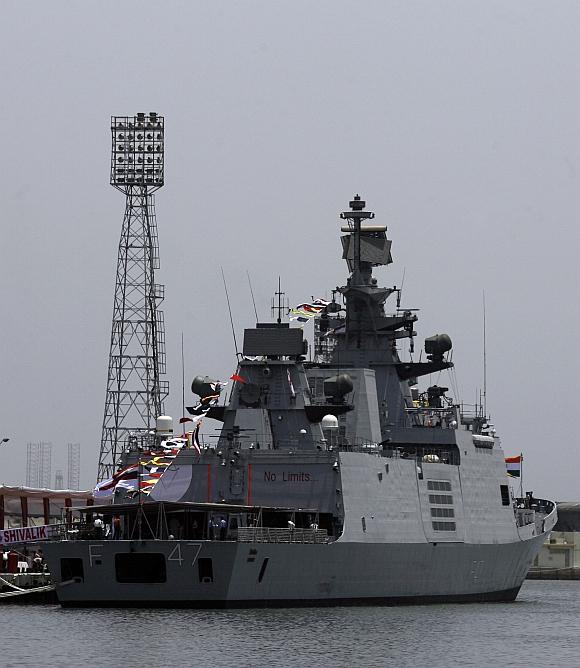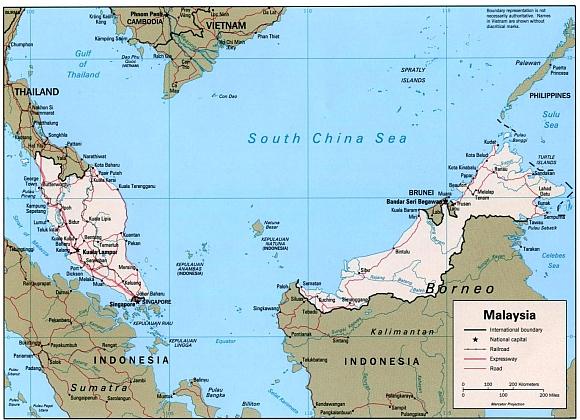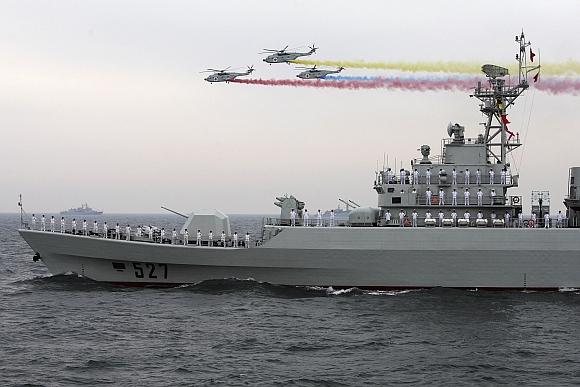Concerns about maritime security have brought the unlikely troika of China, India and the United States together and India has much to gain from this trilateral dialogue, writes Premvir Das
Two back-to-back visits in the last fortnight, one to Beijing for a unique India-US-China strategic trilateral dialogue and the other to Washington for a more understandable India-US interface, have been interesting, to say the least.
Both were at the track-II level, meaning non-governmental, but the composition of delegations was neither amateur nor academic. Almost all participants had served in high decision-making positions, some were in the "business" even today, and wielded influence with those in authority.
The trilateral was unique only because it was so "unnatural". There is little in common with the way each of the three countries sees the other or the world. Between India and China, there is a considerable deficit of trust starting from 1962.
Unresolved border disputes involving sporadic transgressions, claims on large tracts of Arunachal Pradesh and China's involvement in our immediate neighbourhood are only some of them. Bilateral trade that has burgeoned in the last 15 years from less than $1 billion to over $70 billion in 2011 has been a positive but the trade is heavily skewed to our disadvantage.
This has, in a small way, reduced the trust deficit but China continues to be seen as a potential adversary.
'Indo-Pacific' has begun to gain currency
As far as US-China relations are concerned, despite the very sizeable trade relationship, the two countries are poles apart strategically in almost every sphere and each sees the other in suspicious, if not adversarial, terms.
The fact that one country is the undisputed superpower while the other is trying very hard to get there adds to the tension between the two. Inevitability of confrontation cannot be discounted, protestations of "engagement, not containment" regardless.
As for India-US relations, they are, no doubt, good and improving but there are many areas of dissonance since one seeks strategic autonomy while the other wants it to subscribe to its worldview and actions.
American unhappiness on India not toeing its line on Iran is matched by our distress over its continuing relationship with Pakistan. India's position on nuclear liability is another area of discord as also our positions at the World Trade Organisation and on climate change. So, what is the logic of this trilateral dialogue, some might ask and with good reason.
Unlike the US- and Soviet-led face-off in Europe during the Cold War when the focus of security concerns of both sides rested on land, in the Asia-Pacific the preponderance of threats is at sea. It is not surprising that a new term, Indo-Pacific, has begun to gain currency.
The areas of concern are both traditional and those arising from activities of non-state actors. Japan, China and South Korea are contestants for sovereignty over disputed islands in the East China Sea even as China, Taiwan, Vietnam, Malaysia and Philippines claim the same rocky islands in the South China Sea.
'China and India are in a different league'
The potential for nation state confrontation in this stressed environment is great as has been seen recently between China and Philippines. To add to this, China puts its own interpretation on freedom of movement through its Exclusive Economic Zone while Americans have a different understanding.
India is not a South China Sea littoral but it already has over $300 billion of its bilateral trade transiting these waters and this figure is likely to cross $1 trillion by 2020; to say, as some do, that it should have no concern with that region is laughable.
Countries of Southeast Asia and Oceania have their own concerns. In addition, energy lifelines of China and Japan and others pass through the shipping routes of the Indian Ocean and interdiction, even for limited periods, can cause great harm to the economies of these countries. Add to this brew threats posed to shipping by piracy in narrow waters such as those off Somalia and Malacca Straits.
In short, the maritime theatre has become the focus of global security concern today and it will remain so for some time to come. It is not surprising that major powers, the US, China and India being three of them, are now shifting attention seawards.
American prowess at sea needs no elaboration. China and India are in a different league. The former is involved in rapid expansion of its maritime capability -- there were claims of a "maritime renaissance spurred by national desire" -- but it will take many years before the Chinese navy can operate -- not deploy -- credibly in distant seas.
Aircraft carriers will plug a major shortcoming but at least a half dozen will be needed before a couple could be sent away to distant seas. The Indian Navy, like the proverbial tortoise, is moving slowly with major impediments in the way.
These are times of fair winds and following seas
Yet, in its ability to undertake credible operations in the north Indian Ocean -- through which the shipping routes pass -- it is more capable than the Chinese and will remain so as long we are vigilant; India's geography gives it value additions at sea that China will be hard put to match.
In fact, one inadequacy the Chinese recognise in their security equations with India is our ability to play a meaningful role in the Indian Ocean; the Americans had recognised this much earlier.
Concerns at sea, in consequence, are one of the important themes that bring the three nations to the same table. Both in Beijing and in Washington, the discussions quickly veered to maritime security even as other issues -- such as energy and terrorism -- came under the scanner.
We must recognise our advantages and build on them, literally. At one level, there is need for quick acquisition decisions and their efficient implementation. Our force levels have fallen and actions must be taken to turn the tide. At another, we must be ready to sense the changes that are taking place.
One can sense a desire on the part of the Chinese to interact with us on the challenges they face at sea. Our response should be positive; there is nothing to lose and engagement will show our confidence; if this adds to their insecurity, no harm done.
The Americans, on their part, are now ready to go beyond military purchases and initiate co-production of high technology platforms and systems. We should quickly identify these areas; building aircraft carriers and nuclear-powered submarines should be at the very top of our wish list. For us, these are times of fair winds and following seas. We should make the most of them while the good weather lasts.
Thanks to Rediff& Reuters slideshow






0 comments:
Post a Comment